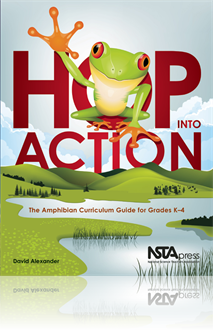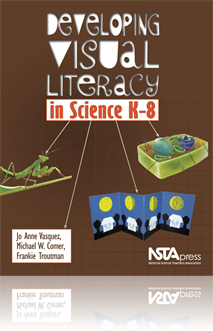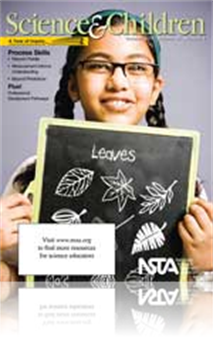All Resources
Book Chapter
In this lesson, students work in teams to create their own amphibian conservation plans. The objective is for students to develop and explain their own conservation ideas....
Book Chapter
In this lesson, students discuss and evaluate complicated decisions that take place around a frog pond habitat. The objective is for students to examine and discuss their own values around real-life environmental scenarios that involve amphibians....
Book Chapter
In this lesson, students take on the roles of various stakeholders in a town meeting. The objectives are for students to identify and describe the points of view of different stakeholders in a fictitious community dilemma, as well as develop an under...
Book Chapter
In this lesson, students explore an amphibian habitat to observe and collect data about amphibian behaviors. The objective is to identify the behaviors of amphibians in their natural habitat....
Book Chapter
In this lesson, students create art based on amphibian species and analyze how art can impact culture and how artists use issues as subjects for their work. The objectives are for students to create art that depicts amphibians and then research and ...
Book Chapter
In this lesson, students learn the life cycle of a frog through discussing and acting out their growing stages. The objective is to identify the stages of amphibians from egg to adult....
Book Chapter
Amphibians come in many shapes, sizes, and colors and can be described and identified using language that appeals to our senses of sight, touch, and hearing. When students compare different amphibians, they are more likely to think deeply about the p...
Book Chapter
In this lesson, students describe and demonstrate the movement of amphibians and reptiles through a relay race. The objective is for students to be able to describe the characteristic movements of amphibians....
Book Chapter
In this lesson, students will color and hide amphibians to learn about camouflage and use their sense of sight to search them out. The objective is for students to be able to demonstrate their knowledge of how camouflage and bright coloration are use...
Book Chapter
In this lesson, students move through an outside area or school hallway to discover picture cards with messages that describe migration challenges. The objectives are for students to be able to describe migration as a regular seasonal movement and id...
Book Chapter
In this lesson, students discuss the ingredients that make up a healthy frog pond. The objective is for students to be able to describe the components of a frog pond to include living parts—plants and animals—and nonliving parts—water, air, so...
Book Chapter
In this lesson, students create a list of living and nonliving things found within a frog pond habitat and discuss their relationships to each other through the creation of a simulated web using a ball of yarn. The objective is for students to be abl...
Book Chapter
Visual Literacy in Earth Science: Phases of the Moon
Chapters 6, 7, and 8 are practice chapters. Each chapter provides the appropriate content standards for grades K-4 and 5-8 and several partial lessons and each follows the same format but addresses a different content area. This chapter addresses Ear...
Journal Article
The Arnold Arboretum is a public “tree museum” that sits on more than 300 acres of parkland in Boston. Like many public parks, the arboretum uses a percentage of its funding to provide nature education for adults and schoolchildren, facilitated b...





